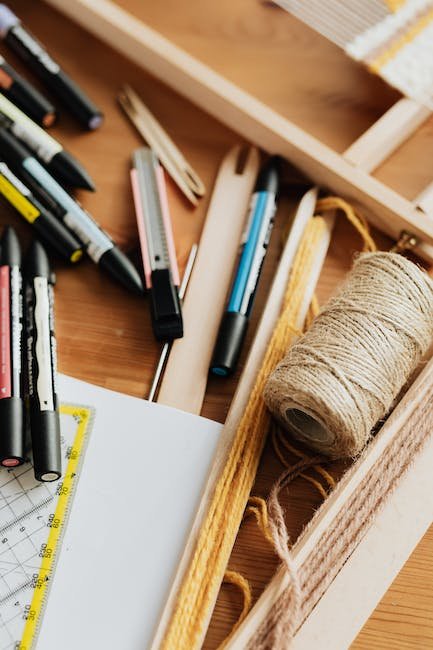Now Reading: How to Make Your Own DIY Leafy Green Foraging Kit
-
01
How to Make Your Own DIY Leafy Green Foraging Kit

How to Make Your Own DIY Leafy Green Foraging Kit
The mesmerizing hues of vibrant greens dancing in the breeze, the earthy aroma whispering its secrets in each leaf’s fold—there’s something undeniably magical about foraging for leafy greens. Engaging in this ancient practice not only reconnects us with nature’s bounty but also fills our plates with an unrivaled freshness. And what better way to embark on this adventure than by crafting your own DIY leafy green foraging kit? From the thrill of hunting to the satisfaction of gathering, we will guide you through every step, allowing you to create a companion that will enhance your foraging experiences and awaken your senses to the wonders of the natural world. So, roll up your sleeves and let’s embark on a journey of discovery and craftsmanship!
Table of Contents
- Planning and Gathering: Choosing the Perfect Leafy Greens for Your Foraging Kit
- Creating a Sustainable Container: Designing an Ideal DIY Foraging Kit
- The Essentials: Must-Have Tools for a Successful Leafy Green Foraging Kit
- Cultivating an Urban Oasis: Tips for Growing Leafy Greens in Limited Spaces
- Harvesting and Enjoying the Fruits of Your Labor: How to Make the Most of Your DIY Foraging Kit
- Q&A
- Concluding Remarks

Planning and Gathering: Choosing the Perfect Leafy Greens for Your Foraging Kit
Embarking on a journey into the wilderness to forage for leafy greens can be an exciting and rewarding experience. However, it’s crucial to plan and gather the right selection of plants to include in your foraging kit. After all, Mother Nature offers us an abundance of options, each with their own distinct flavors and nutritional benefits. To help you make the best choices, here’s a selection of leafy greens to consider:
- 1. Wild Spinach: With its tender leaves and mild taste, wild spinach (also known as lamb’s quarters) is a versatile addition to any foraging kit. It’s packed with essential vitamins and minerals, making it a nutritious and delicious choice for salads, stir-fries, or even smoothies.
- 2. Dandelion Greens: Often underrated, dandelion greens are a powerhouse of nutrients. Their slightly bitter taste adds a unique dimension to salads, soups, or sautés. Plus, their vibrant yellow flowers can also be used as a beautiful garnish.
- 3. Nettle: While its stinging leaves may seem daunting at first, nettle rewards those who brave its prickles with a delightful earthy flavor. Boasting numerous health benefits, nettle can be used in teas, soups, or even as a substitute for spinach in various recipes.
Remember, foraging responsibly is essential to preserve the delicate balance of nature. Always be sure to identify plants accurately, picking them in sustainable quantities and adhering to local regulations. So, strap on your foraging kit and let the adventure begin as you explore the bountiful world of leafy greens!

Creating a Sustainable Container: Designing an Ideal DIY Foraging Kit
In the quest for creating a sustainable container for your DIY foraging kit, the possibilities are endless. It’s all about striking the perfect balance between functionality, eco-friendliness, and aesthetics. Here are some considerations to keep in mind when designing your ideal foraging kit:
Material Selection:
- Choose recycled or upcycled materials, such as repurposed wooden crates or jars, to minimize environmental impact.
- Opt for organic materials like bamboo or hemp, which are biodegradable and renewable.
- Consider utilizing glass or stainless steel containers for durability and to avoid plastic waste.
Compartmentalization:
Ensure your DIY foraging kit has adequate compartments to keep different items organized. This way, you can easily access your tools and collect your treasures:
- Add separate sections for plants, seeds, and small gardening tools.
- Include a waterproof pocket to protect delicate specimens or to store ephemeral items like pressed flowers.
Comfort and Accessibility:
Your foraging kit should be designed with convenience in mind, making it easy to carry and use during your expeditions:
- Ensure the container is lightweight and portable, allowing for comfortable transportation.
- Incorporate adjustable straps or handles for easy carrying, adapting to your preference.
- Include a quick-release buckle or magnetic closure system for easy access to your tools and foraging finds.
By considering these factors and using your creativity, you can design an ideal DIY foraging kit that not only serves its purpose but also contributes to a more sustainable and environmentally conscious journey.

The Essentials: Must-Have Tools for a Successful Leafy Green Foraging Kit
Embarking on a leafy green foraging journey? Look no further! We have curated a list of must-have tools that will ensure your success in this delightful pursuit. So gather your enthusiasm, don your foraging hat, and let’s get into it!
1. A trusty pair of garden shears: A forager’s best friend, garden shears are essential for cleanly snipping off tender leafy greens. Invest in a sturdy pair with sharp blades to effortlessly harvest delicate plants without damaging them.
2. A reliable field guide: Nature is teeming with an array of leafy greens, some of which may be unfamiliar to you. Equip yourself with a comprehensive field guide to identify and differentiate edible greens from their look-alikes. This invaluable resource will enhance your foraging knowledge and keep you safe from any potential hazards.
3. A collection bag: Picture yourself wandering through lush meadows and dense forests, gathering a bountiful harvest of leafy greens. A spacious, sturdy collection bag will be your constant companion, ensuring you can gather an abundant supply while keeping your hands free. Opt for one with adjustable straps and multiple compartments for added convenience.
4. A magnifying glass: Foraging isn’t just about plucking greens; it’s also a journey of discovery. A magnifying glass will enable you to closely examine varieties of leaves, flowers, and botanical wonders you encounter. Unveil the intricate details of nature’s creations as you marvel at the hidden beauty within.
5. Scent-proof containers: Proper storage is essential to keep your foraged greens fresh for longer. Choose scent-proof containers that will prevent any aromatic foliage from leaving unwanted traces in your bag. This will preserve the delicate flavors and aromas of your harvest until you can savor them in culinary delights.
With these essential tools by your side, your leafy green foraging adventures are bound to be a remarkable and rewarding experience. So get ready to explore nature’s edible offerings and immerse yourself in the wonders of the great outdoors!

Cultivating an Urban Oasis: Tips for Growing Leafy Greens in Limited Spaces
Creating a lush green oasis in the heart of the city is not just a dream anymore. With limited spaces, it is still possible to cultivate a thriving garden filled with fresh leafy greens. Here are some tips to get you started on transforming your urban space into a flourishing haven of greenery:
- Choose the right containers: Opt for compact containers that can fit in small spaces like balconies or windowsills. Hanging baskets, vertical planters, or even repurposed items like shoe organizers can maximize your growing area.
- Select the ideal greens: Not all leafy greens thrive in tight spaces, so choose varieties that are well-suited for compact gardening. Compact lettuces like butterhead or romaine, spinach, or chard are fantastic choices.
- Utilize vertical gardening techniques: When horizontal space is limited, it’s time to think vertically. Install trellises or utilize wall-mounted planters to grow your greens upwards, making the most of every square inch. This not only saves space but also creates an eye-catching display.
- Consider hydroponics or container gardening: In restricted areas, hydroponics or container gardening can work wonders. These innovative methods allow you to grow leafy greens without the need for soil or much space. Explore options and find the style that suits your needs.
- Provide adequate light: Leafy greens thrive in sunlight, so ensure they receive an ample amount of light. Position your containers near windows or invest in grow lights if natural sunlight is limited. Your plants will reward you with vibrant and healthy foliage.
- Maintain proper watering and fertilization: Leafy greens need consistent moisture and nutrients. Regularly check soil moisture and water accordingly, ensuring not to overwater. Use organic fertilizers to provide essential nutrients required for strong growth.
By implementing these tips, you can cultivate a lush urban oasis filled with invigorating leafy greens, bringing nature’s freshness into your everyday life.
Harvesting and Enjoying the Fruits of Your Labor: How to Make the Most of Your DIY Foraging Kit
Harvesting and Enjoying the Fruits of Your Labor: How to Make the Most of Your DIY Foraging Kit
Once you’ve put together your very own DIY foraging kit, the possibilities are endless! With this versatile toolkit at your disposal, you can dive headfirst into the art of harvesting nature’s bounty. Here are a few tips to help you make the most of your foraging adventures:
- Start Locally: Begin by exploring your immediate surroundings. Familiarize yourself with the native flora and fauna of your area. Foraging close to home allows you to develop a deeper understanding of the plants available in your region and their seasonal cycles.
- Be Mindful of Safety: While foraging can be a wonderfully rewarding experience, it’s important to prioritize safety. Ensure you are well-versed in plant identification and take caution when handling unfamiliar species. Always remember to respect both private and protected lands; seek proper permission and permits before venturing out.
- Experiment with Recipes: Once you’ve gathered your foraged treasures, let your culinary creativity shine. Incorporate these newfound natural ingredients into your favorite dishes or try out new recipes. From vibrant wild salads to savory stews, the possibilities are as vast as the wilderness itself.
So, grab your DIY foraging kit and set out on an incredible journey to discover the wonders of the natural world. Remember, with a little knowledge and a touch of adventure, you can savor the sweet rewards of your labor in the great outdoors!
Q&A
Q: What is a DIY leafy green foraging kit?
A DIY leafy green foraging kit is a collection of tools and materials that help you explore and gather wild edible greens, such as herbs, leaves, and other plants. It typically includes items like a foraging guide, a pair of gloves, a reusable bag, and a small knife for harvesting.
Q: Why should I make my own DIY leafy green foraging kit?
Making your own DIY leafy green foraging kit allows you to personalize it to your needs and preferences. It also adds an element of creativity and self-sufficiency to your foraging adventures, enhancing the overall experience.
Q: What tools and materials do I need for a DIY leafy green foraging kit?
You’ll need a sturdy pair of gloves to protect your hands, a reliable foraging guide or app to help identify edible plants, a small knife for harvesting, a reusable bag for gathering, and some paper or a notebook to record your findings and observations.
Q: Where can I find a foraging guide or app?
You can find foraging guides at local bookstores, libraries, or online retailers. Alternatively, there are several smartphone apps available that provide detailed information on plants, their edibility, and habitat. Some popular apps include “Wild Edibles” and ”PlantSnap.”
Q: What safety precautions should I consider when using a DIY leafy green foraging kit?
Always double-check the identification of plants before consuming them. Be cautious of poisonous look-alike plants in your area. Avoid foraging in areas contaminated with pesticides or near heavily trafficked roads. Finally, never harvest too much from one plant or location to ensure its sustainability.
Q: How can I learn to identify edible greens for foraging?
Attend local foraging workshops or join nature groups in your area to learn firsthand from experienced foragers. Utilize guidebooks, online resources, and smartphone apps to identify edible plants. It’s essential to gather knowledge and practice before foraging on your own.
Q: Can I forage leafy greens in urban environments?
Yes! Urban environments often have parks, community gardens, or even sidewalk cracks that offer edible greens like dandelion, chickweed, or plantain. Before foraging in urban areas, ensure plants have not been exposed to pollutants or pesticides.
Q: Is it legal to forage leafy greens in my area?
Foraging laws vary by location, so it’s important to research and understand the regulations in your area. Some places have restrictions or permits required for foraging, especially in protected nature reserves or private properties. Always respect local laws and ecosystems.
Q: How can I responsibly forage leafy greens?
Responsible foraging involves sustainable practices to protect the environment and ensure future growth. Harvest only what you need and avoid damaging plants or their roots. Leave plenty of plants for wildlife, insects, and natural seed dispersion. Always forage in a respectful and mindful manner.
Q: Are there any plants I should avoid foraging?
Absolutely. Without proper knowledge, avoid plants that have poisonous look-alikes or are known to cause allergies or adverse reactions. Examples include poison ivy, poison oak, and hemlock. Stick to plants you can confidently identify as edible or use trusted sources for identification.
Concluding Remarks
As we conclude this article on crafting your very own DIY leafy green foraging kit, may we depart with a newfound appreciation for the wonders of nature and the bountiful treasures it holds. In an era where convenience thrives, reconnecting with the age-old practice of foraging reminds us of our deep-rooted connection to the natural world.
By arming yourself with this self-made kit, you embark on a journey that not only sustains your body but nurtures your soul. The thrill of venturing into nature’s pantry, feeling the crisp leaves beneath your fingertips, and indulging in the vibrant flavors unlocked by your efforts adds a touch of magic to every meal.
Remember, foraging is not just an act of gathering nourishment, but an art that allows us to appreciate the intricate dance of seasons, the symphony of colors, and the incredible diversity nature has to offer. With each leaf plucked delicately or mushroom carefully harvested, we become stewards of our environment, fostering a sense of mindfulness and gratitude for all that Mother Earth provides.
So, gather your tools, prepare your basket, and unleash your inventive spirit into the forest, garden, or even your local park. Discover the forgotten greens, the wild edibles, and hidden gems that lie waiting, patiently, for you to uncover.
Whether you’re an adventurous foodie seeking to expand your culinary repertoire, a nature enthusiast yearning for a deeper connection with the outdoors, or someone searching for a simple way to add freshness to your diet, this DIY leafy green foraging kit is your gateway to a world of sustainable sustenance and endless inspiration.
Now, armed with the knowledge and tools imparted in this article, go forth and forge a newfound kinship with the natural kingdom. May your harvests be bountiful, your meals be nourishing, and your heart be forever entwined with the beauty bestowed upon us abundantly by the humble leafy greens.
As an affiliate, my content may feature links to products I personally use and recommend. By taking action, like subscribing or making a purchase, you’ll be supporting my work and fueling my taco cravings at the same time. Win-win, right?
Want to read more? Check out our Affiliate Disclosure page.





